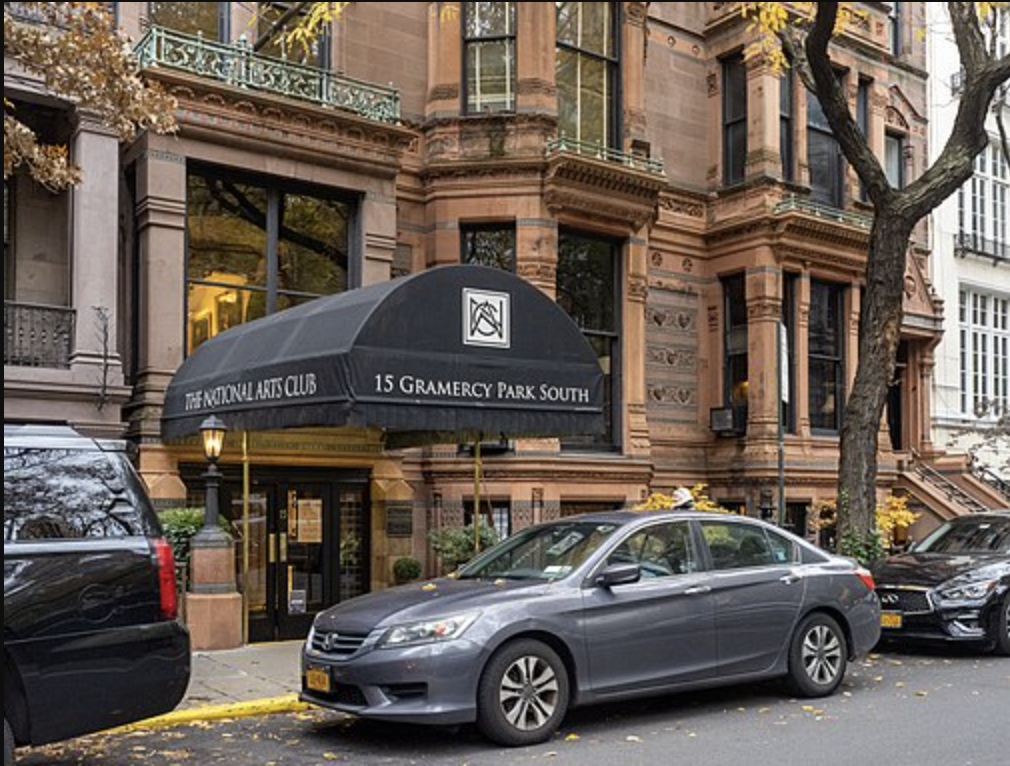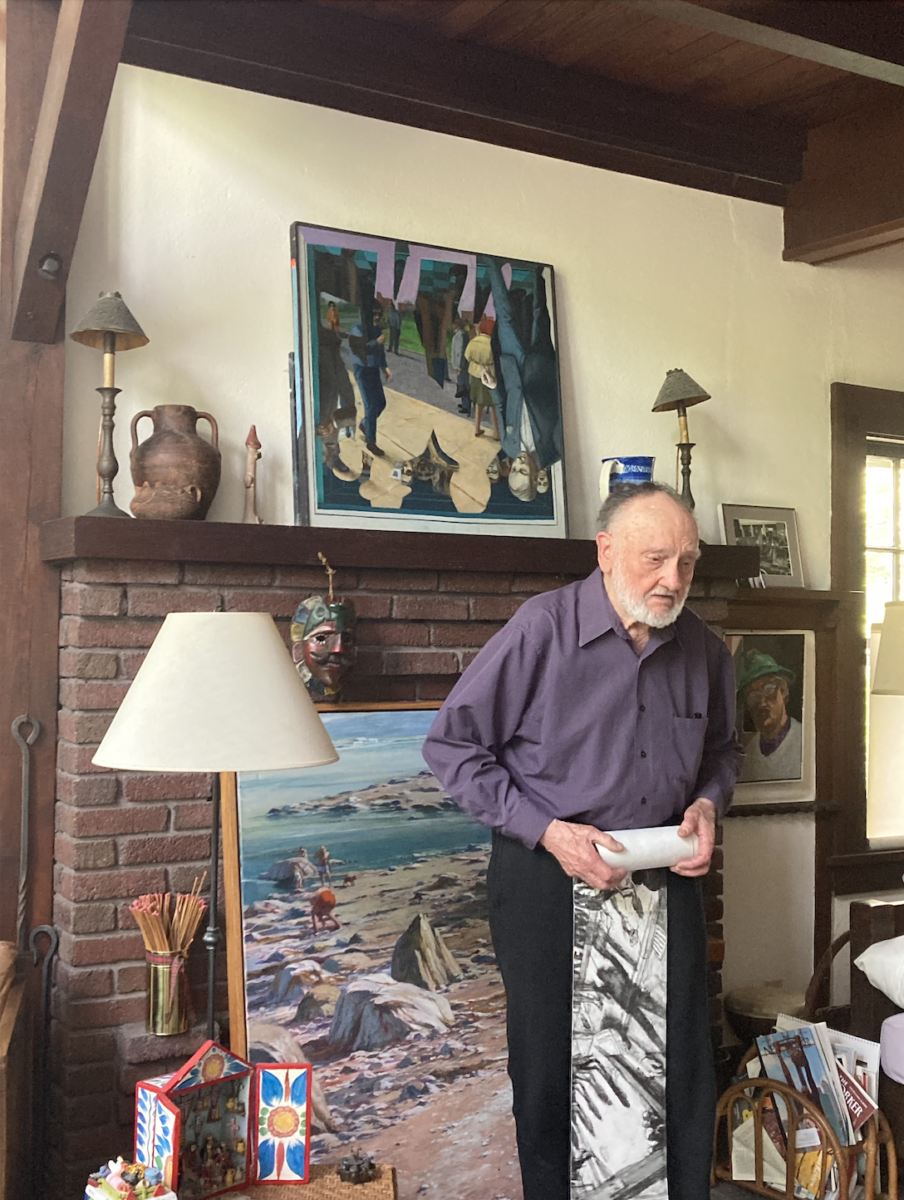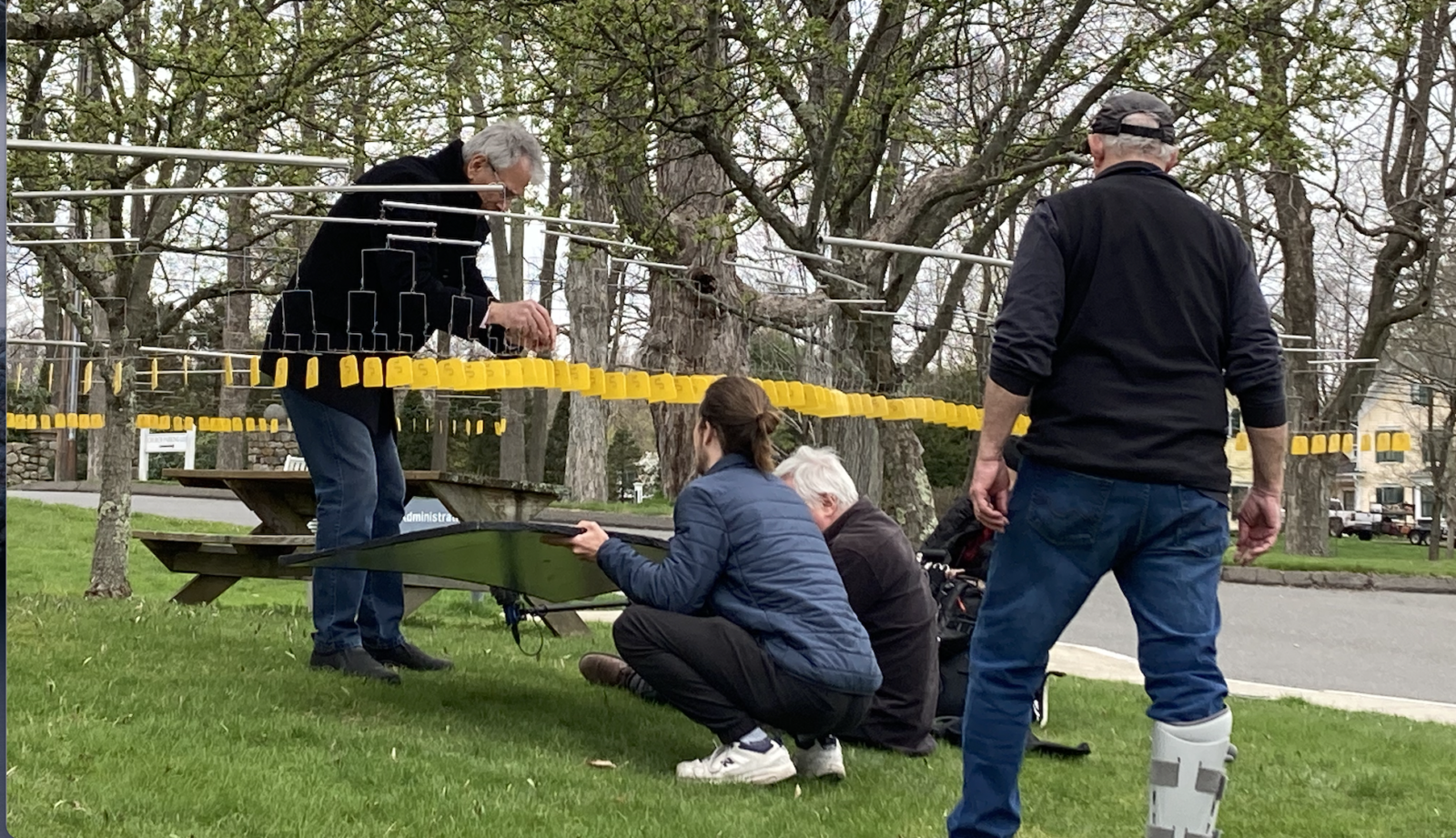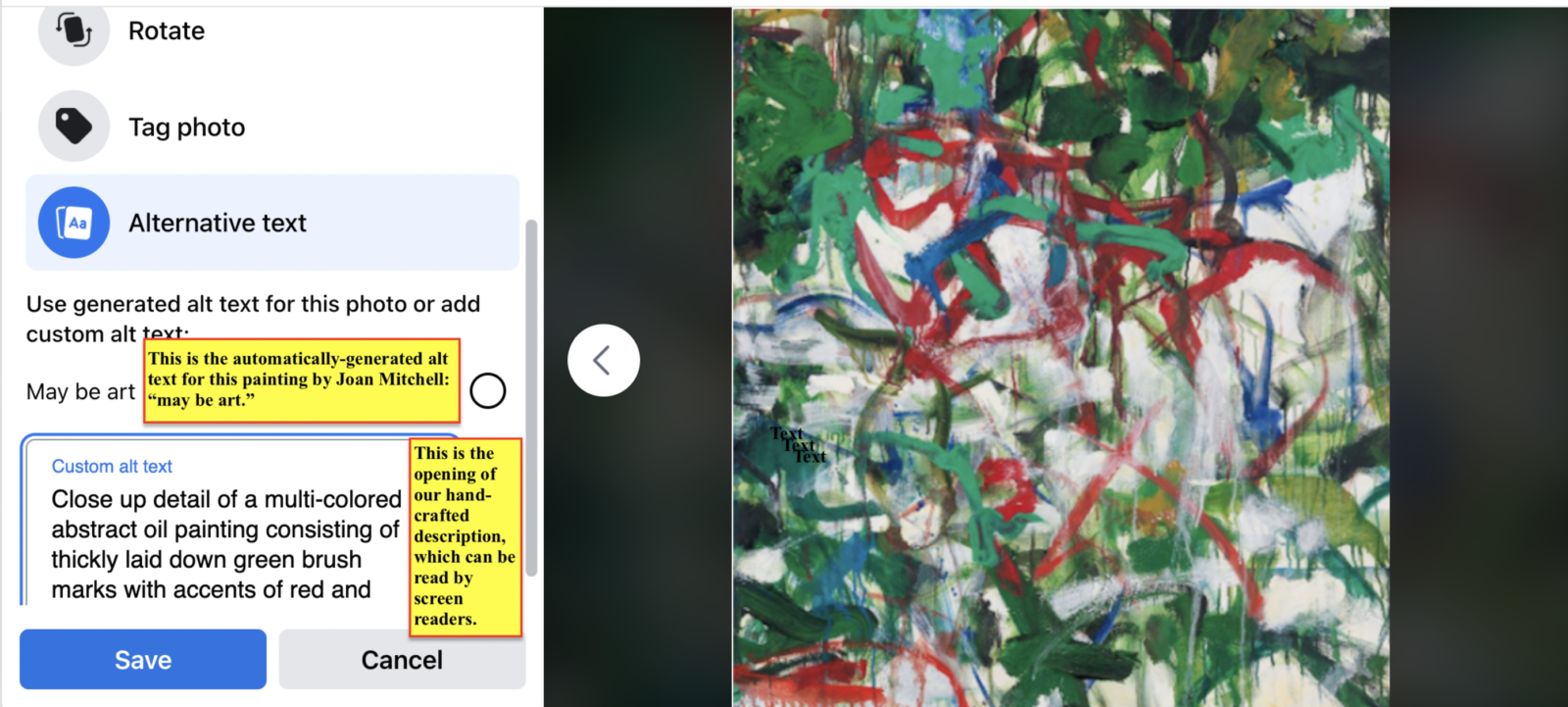V&AP Happenings: A new film, a benefit exhibition, studio visits
August 04, 2022

In recent months, we’ve been visiting artists in their studios again; began making a new film about kinetic sculptor Tim Prentice; and have been working to make art accessible online by hand-crafting alt text. Excitingly, we have also launched into planning the Vision & Art Project’s 10th Anniversary Benefit Exhibition, which is going to be held at the National Arts Club (Gramercy Park, NYC), now scheduled for the spring of 2024.
The Vision & Art Project’s 10th Anniversary Benefit Exhibition, Spring 2024, the National Arts Club (NYC)

Ten years ago, the American Macular Degeneration Foundation (AMDF), headed by Chip Goehring, founded the Vision & Art Project, whose mission is to raise awareness about the presence of macular degeneration in art, to help exceptional artists with macular degeneration at what can be a difficult time in their careers, and to make online art accessible to people with low vision. AMDF founded the Vision & Art Project as a humanistic research and educational initiative that supports AMDF’s overall mission of educating people about macular degeneration, helping those with macular degeneration live with the disease, and providing funding to researchers seeking to find a cure.
In the years since the Vision & Art Project was founded, we’ve featured the work of dozens of artists on our educational website, done oral histories with many outstanding professional artists with macular degeneration, made three films, and curated an art exhibit, The Persistence of Vision, which was highlighted in the New York Times.
We couldn’t be more pleased to announce that to celebrate our 10th anniversary, we are going to be having an exhibition at the National Arts Club (Gramercy Park, NYC), now scheduled for March 18-April 26, 2024, the proceeds of which will benefit participating artists and AMDF, which remains the Vision & Art Project’s sole funder. This exhibition will feature approximately 50 works by the many outstanding artists with whom we have worked over the past decade. We’re honored that the National Arts Club is hosting us and grateful to the many artists, artist estates, and gallerists who have contributed work to this upcoming exhibition.
We’ll be posting updates about exact dates, programming, and participating artists in the coming months as we know more and will hope to see you in New York in 2024!
Our Most Recent Feature: A Studio Visit with Robert Birmelin

For much of 2020–21, we couldn’t visit artists in their studios, an activity we missed, since few things are more exciting than walking into the studio of a working artist. So, it was particularly thrilling when, earlier this summer, we visited the renowned painter, draftsman, and printmaker Robert Birmelin. Birmelin, who is 89 years old, lost the vision in his left eye due to macular degeneration around six years ago; to a small degree, the vision in his right eye is also affected by the disease.
After maintaining a studio for almost four decades at various locations in Manhattan, Birmelin transitioned to working at his home studio in Leonia, New Jersey, during the pandemic. It is lit by two magnificent north-facing windows and filled with paintings and drawings from his six-plus decades of work. Drawing has figured prominently in Birmelin’s work and working process throughout his career. Because of his vision loss, it now lies at the core of what he is doing. In his studio, the better part of a wall is pinned up with his recent work, what he calls “investigations”: intricate pen drawings, many of which are touched by watercolor washes.
Over the course of our visit, Birmelin talked about the first time he met Josef Albers, his studies at Yale, where he received both his BFA and MFA in painting, the time he spent in Europe as an emerging artist on a Fulbright Fellowship and Rome Prize, the ways in which his work has evolved over the years, and how his vision loss has affected his sight and work.
You can read excerpts from our conversation in our most recent V&AP feature, as well as see a rich collection of Birmelin’s artwork, which continues to be as startling and innovative as ever.
We’re Making a New Film (Our Fourth!) about Kinetic Sculptor Tim Prentice

Very excited to have started filming a new project—a documentary about kinetic sculptor Tim Prentice, whose amazing works couldn’t be a more fitting subject for film. In late June, we converged on Prentice’s home and studio in Litchfield Valley, Connecticut, with a film crew and spent two days shooting him and his environs.
We’re excited to be working with Bill Turnley and his colleagues again. Bill also did the camera work for our films about Robert Andrew Parker and Serge Hollerbach, which won several awards at film festivals last year.
A New Vision & Art Project Initiative: Making Online Art Accessible to People with Low Vision

According to a recent New York Times article, as of February 2021 only about 40 percent of website home pages contain alt text, written descriptions of images that screen readers can access. In 2019, only 0.1 percent of over one million tweets did. Given the human labor involved in creating meaningful alt text, this is not surprising. But alt text is a pillar of accessible website design, and its lack comes at a cost to people with low vision.
When we envisioned our new website (which went live in July 2021), one of our priorities was having our content meet the most up-to-date accessibility standards. Because so much of our content is visual, we knew that the inclusion of alt text would be essential to achieving this goal.
Initially, we assumed that the accessible design protocols our website developers were using would automatically generate meaningful alt text. We were surprised, therefore, when at one of our design meetings, it was mentioned that we would have a big job ahead of us, custom crafting alt text for each of the images on our site. At the time, thinking about having to write hundreds of unique, individually crafted descriptions was daunting. Surely, we thought, technology must be at such a place where some kind of smart application could come to our rescue.
What we discovered was that, while some companies (like Facebook and Google) use artificial intelligence (A.I.) to generate alt text, the resulting descriptions are often at best woefully anemic, and at worst completely inaccurate (see image above).
As a result, we are indeed hand-crafting alt text for every image on our site, as well as for the images we post on Instagram and Facebook. It’s going to be a while before all the visual material on our website is accessible to screen readers, but we’re well on our way. In this effort, we’re grateful for the help of our social media followers, many of whom are critiquing and adding to the alt text we’re writing when we post it on our social media channels and ask for feedback.
Website features you may have missed

In case it’s been a while since you’ve visited our website, in addition to our studio visit with Robert Birmelin, we’ve published several new features this year.
In our interview with novelist and essayist Alice Mattison, Mattison talks about what she’s learned about art as someone who views it with macular degeneration.
On the fifth anniversary of Agnes Varda’s penultimate film, Faces Places, we posted an essay about how Varda allowed her vision loss to become a central motif in the film. The vulnerability she revealed in doing so is one of the things that made the film great.
In our review of Georgia O’Keeffe, Photographer, an exhibition that originated at the Museum of Fine Arts Houston, we discuss the insights—and questions—O’Keeffe’s late-life turn to photography as part of her working practice suggested to us.
And, finally, in honor of Memorial Day, we posted an article about Doris Salcedo’s artwork and her moving and profound response to political violence.
Social Media
Please follow us on Facebook and Instagram!

Leave a Comment